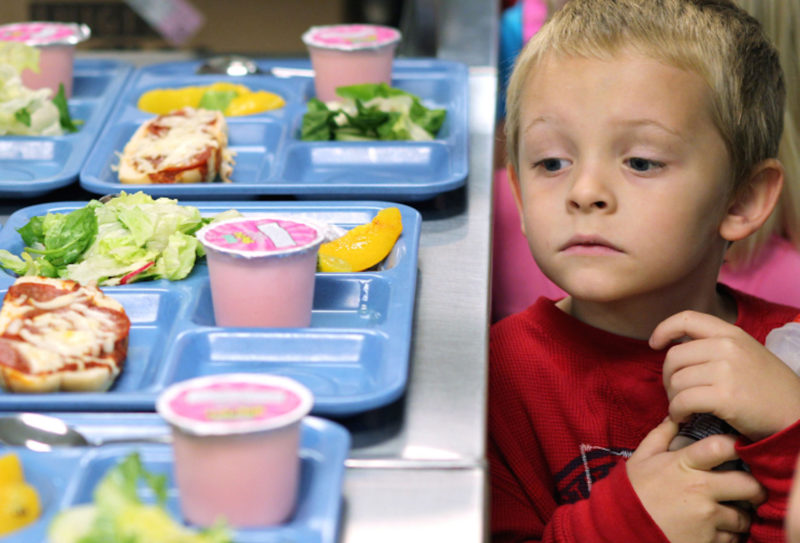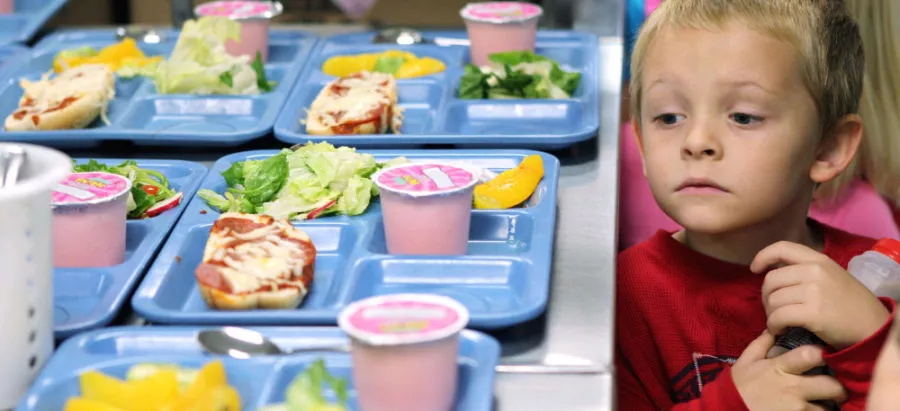 (AP Photo/The Herald-Dispatch, Lori Wolfe)
(AP Photo/The Herald-Dispatch, Lori Wolfe)
Most parents and educators want school cafeterias to serve food that is fresh, local, organic, and nutritious. But the truth is that many school nutrition programs operate on a freezer-to-oven basis. Meals arrive highly processed and ready to pop into the oven.
That’s what Sheila Mulrooney Eldred found nearly a decade ago when she first visited public elementary schools in Minneapolis trying to select one for her children. “I was appalled by the cafeteria choices: sugar-saturated cereals for breakfast, pre-packaged French Toast ‘stix’ with syrup for lunch, and chocolate- or strawberry-flavored milk,” the health and fitness journalist wrote in 2016 for Minnesota Monthly.
Changes in nutritional requirements under the Healthy and Hunger Free Kids Act of 2010, however, have required more fruits, vegetable, and whole grains, and cutbacks on calories and sodium. Now that the measure is law, students eat 16 percent more vegetables and 23 percent more fruit at lunch, according to a 2014 Harvard study.
The changes are also visible throughout Minneapolis Public Schools, where, since 2011, more than 30,000 students have received locally sourced foods—things like fresh produce, meats, and baked goods. Minneapolis isn’t the only city that’s changing its menu.
The trays in Kentucky’s Madison County Schools (MCS) are chock full of locally sourced foods, too. That’s thanks to a partnership with local farmers who supply the school system with a variety of fresh fruits and vegetables.
“I want kids to eat healthy,” says Scott Anderson, food service director for MCS. “We saw kids who weren’t eating their vegetables and what they were eating wasn’t tasty.”
Last year, the school district purchased salad bars for every school. This year, local farms offered students healthy, locally grown options, including cucumbers, broccoli, zucchini, kale, and pumpkin.
Cafeteria staff has been trained to create meals that kids will enjoy, too.
If your district is thinking about making the switch to healthy school meals, consider these steps:
• To get food grown locally, create partnerships with farmers, butchers, and dairy producers.
• Start a school and community garden, and invite students, parents, and other community members to help.
• Provide school nutrition staff with professional development opportunities covering scratch cooking, and knife skills. Remember that fresh food is more labor intensive, and encourage an increase in staff hours.
• Acknowledge that many students depend on their school to provide for basic nutrition. Consider adding things like breakfast in the classroom, after school snacks, and summer breakfast and lunch.
• Advocate for better funding. Most schools in the National School Lunch Program receive a per-meal reimbursement that is between $3.25 and $3.30 for qualified students. Most districts use the funding as a base upon which to build a self-sustaining nutrition program that can function without other district funds.
• Form coalitions to represent the views of all interested parties, including students, parents, school nutrition staff, education support professionals, teachers, administrators, farmers, and child nutrition advocacy groups.


